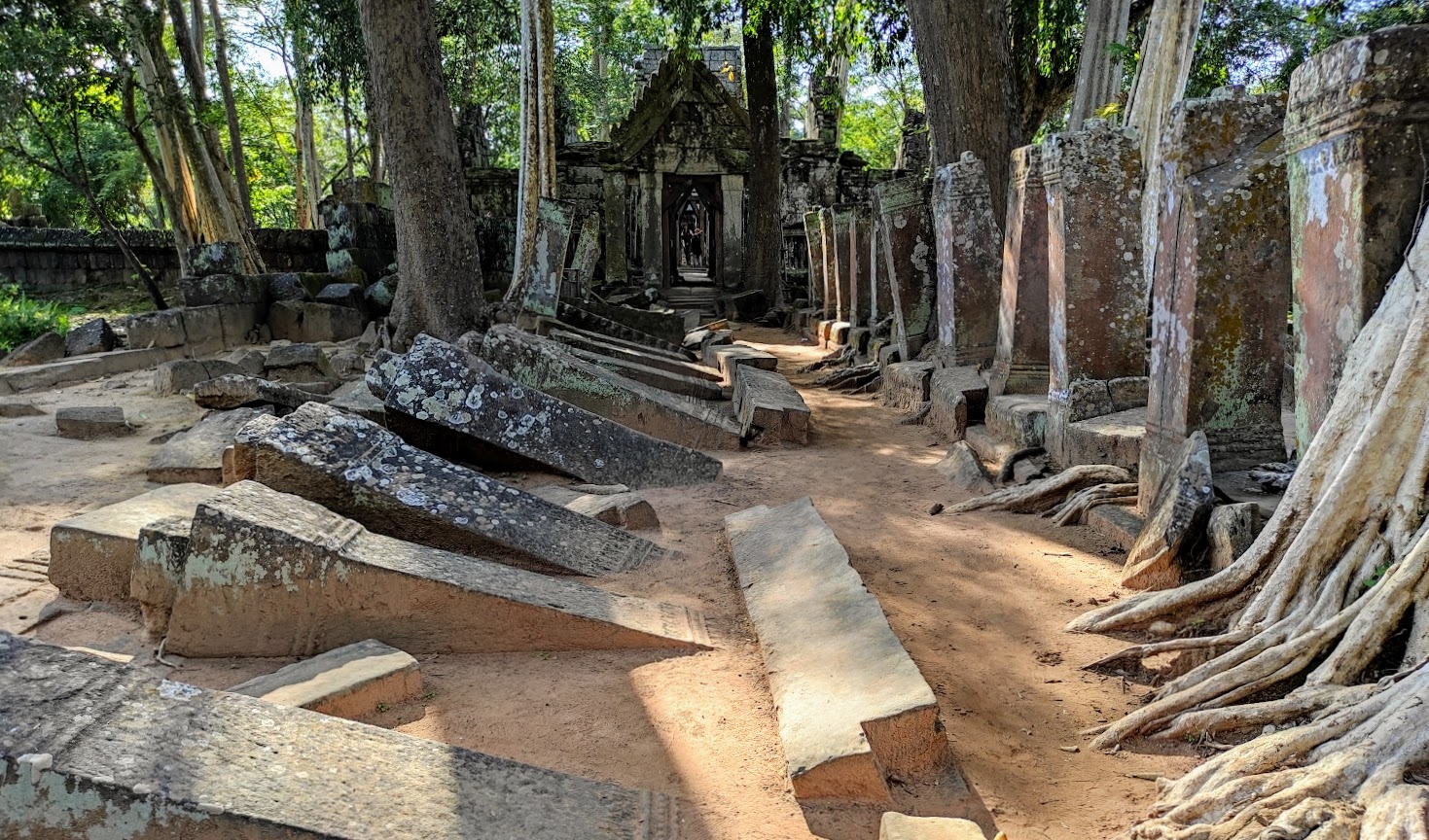- Area: Preah Vihear Province > Kuleaen District > Srayang Commune > Koh Ker Village
- | Type: Ancient Remains & Temples
Prasat Thom is the principal temple complex of the Koh Ker group and also encloses some 21 shrines and the iconic pyramid, Prasat Prang on its western side behind which is the great mound, known as the Tomb of the White Elephant, whilst on its far eastern side are the remains of two structures connected by a causeway that is today named as Prasat Srot.
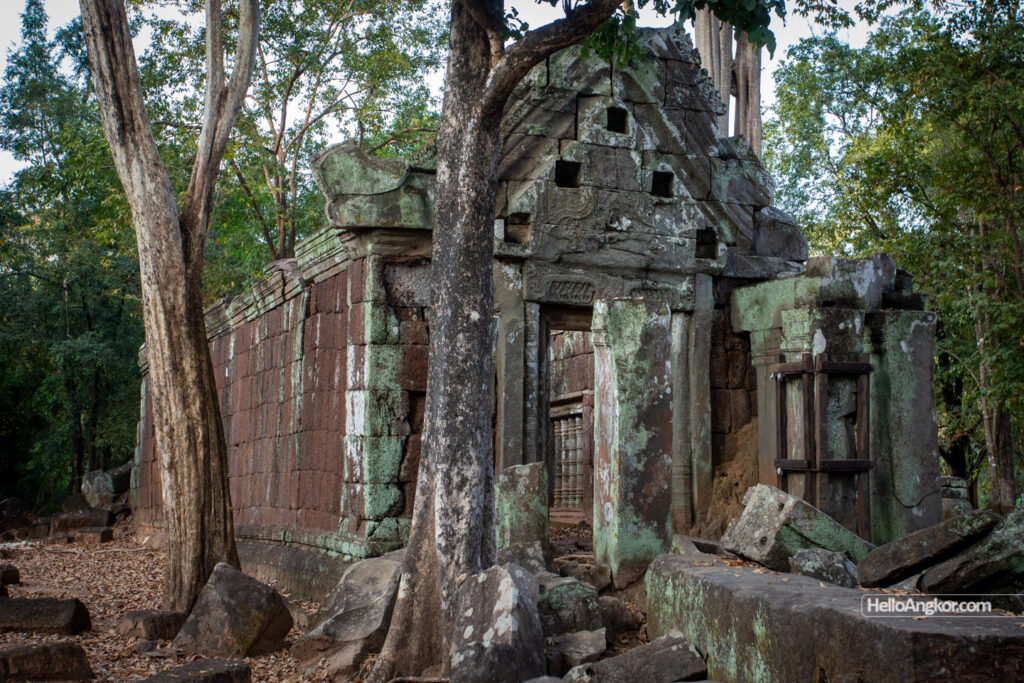


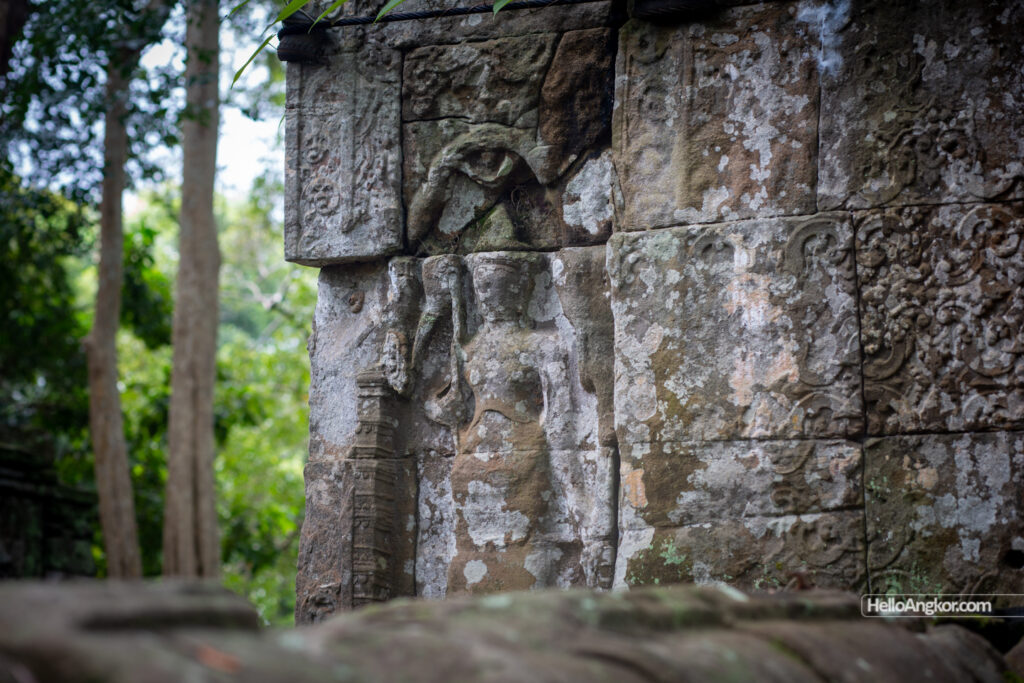
Visiting Prasat Thom
At the eastern entrance, there are several drink and food stalls and toilets can be found a small walk to the north. The site is easy to navigate with a wooden path following the central axis of the site all the way through. Do spend a little time around the gopura to see the remnants of interesting carvings, Dvarapala and diety, inscriptions, and remnants of statuary.
I suggest visiting this site in the morning and the others on the circuit in the afternoon, to get the best light and keep out of the hot sun as much as possible, but either way is OK. You can easily spend an hour here for a quick stroll through and a visit to the grand pyramid, Prasat Prang, or much longer if you want to explore all the quirks and features.
Layout

Prasat Thom is aligned on an east-west axis, tilted north, beginning on its eastern side with the two structures early French researchers would label “palais” (today signposted as Prasat Srot) then leading west to a large gopura (gate) that is transversely flanked by two long halls followed by two monumental laterite towers and the grand brick entrance gopura.

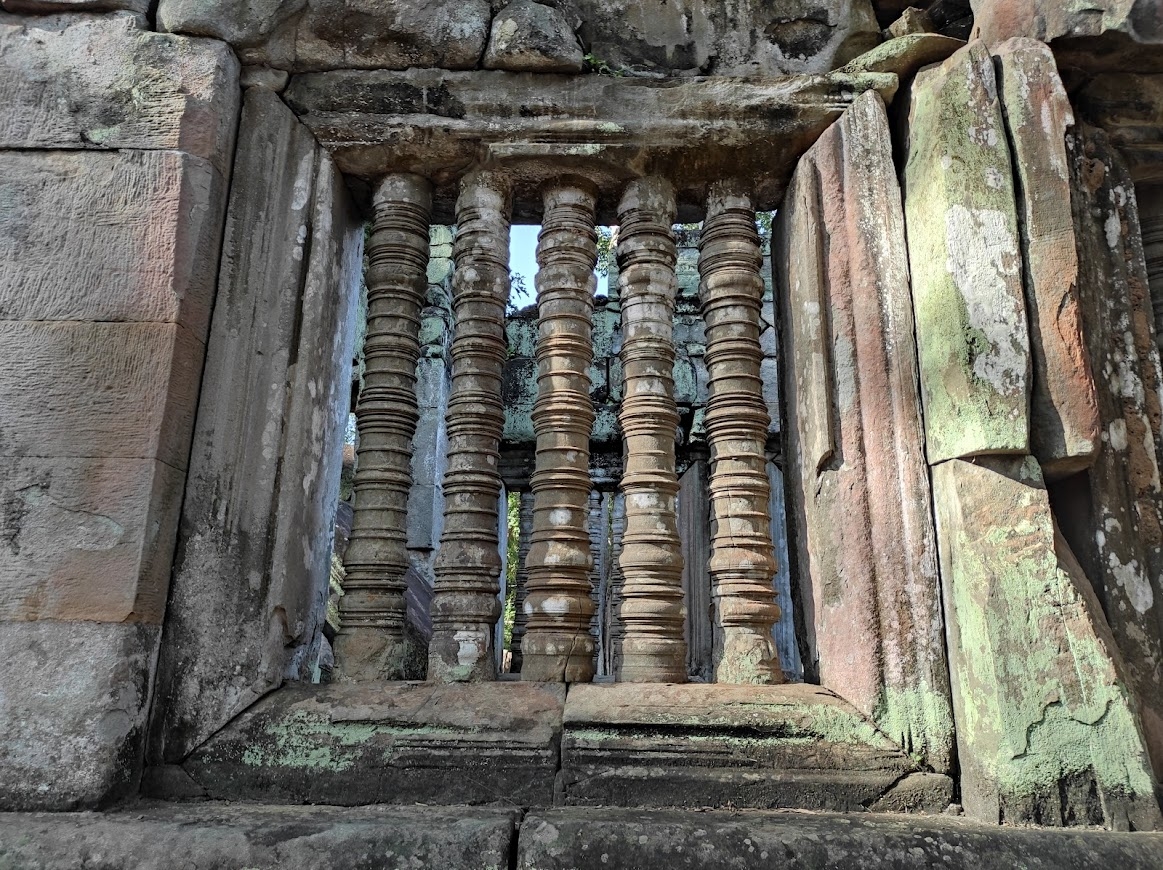
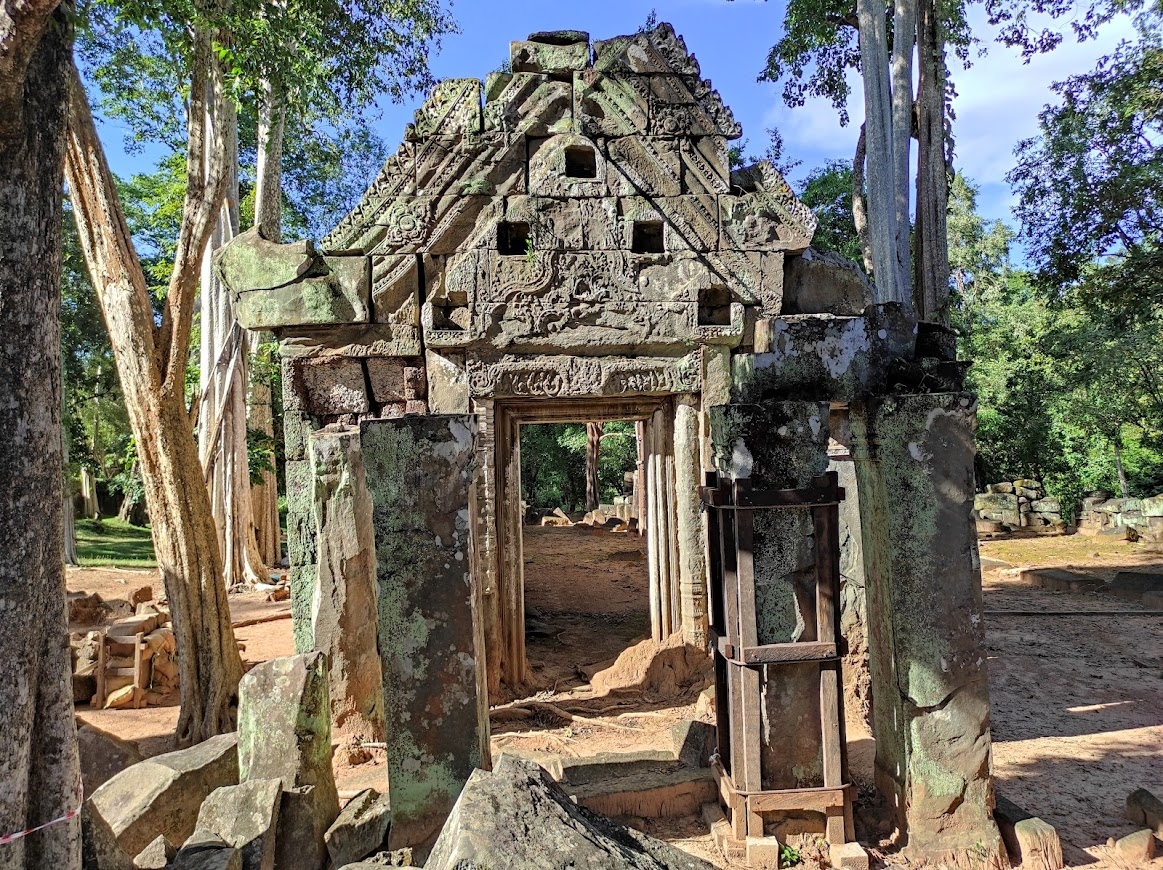
This grand brick temple tower, also known as Prasat Kraham, the Red Temple, or Gopura III East, once housed a 5m tall, 7-tonne statue of dancing Shiva sporting five heads which has been undergoing an incredible restoration effort that’s ongoing and is now nearing its fourth year. It is preceded and flanked by two laterite towers, one retaining a grand ornate pedestal in a wonderful state of preservation.
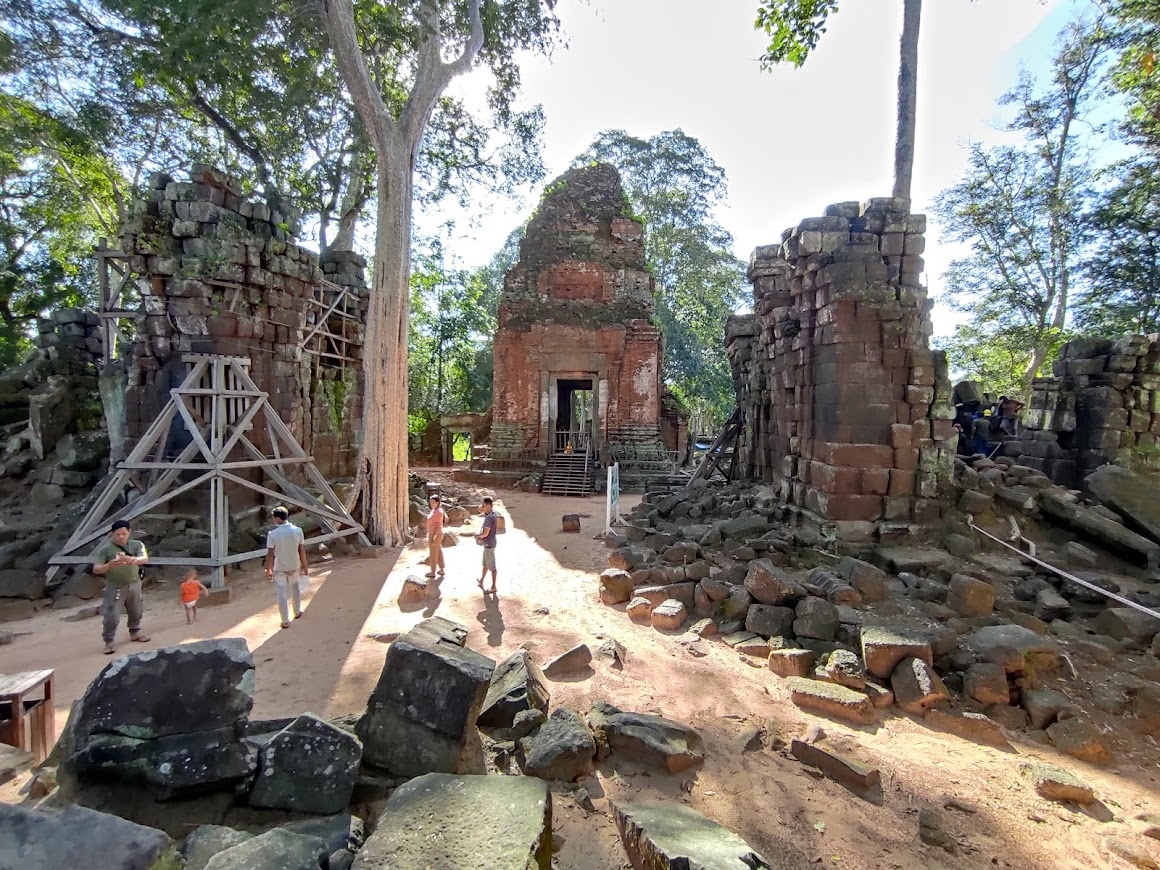
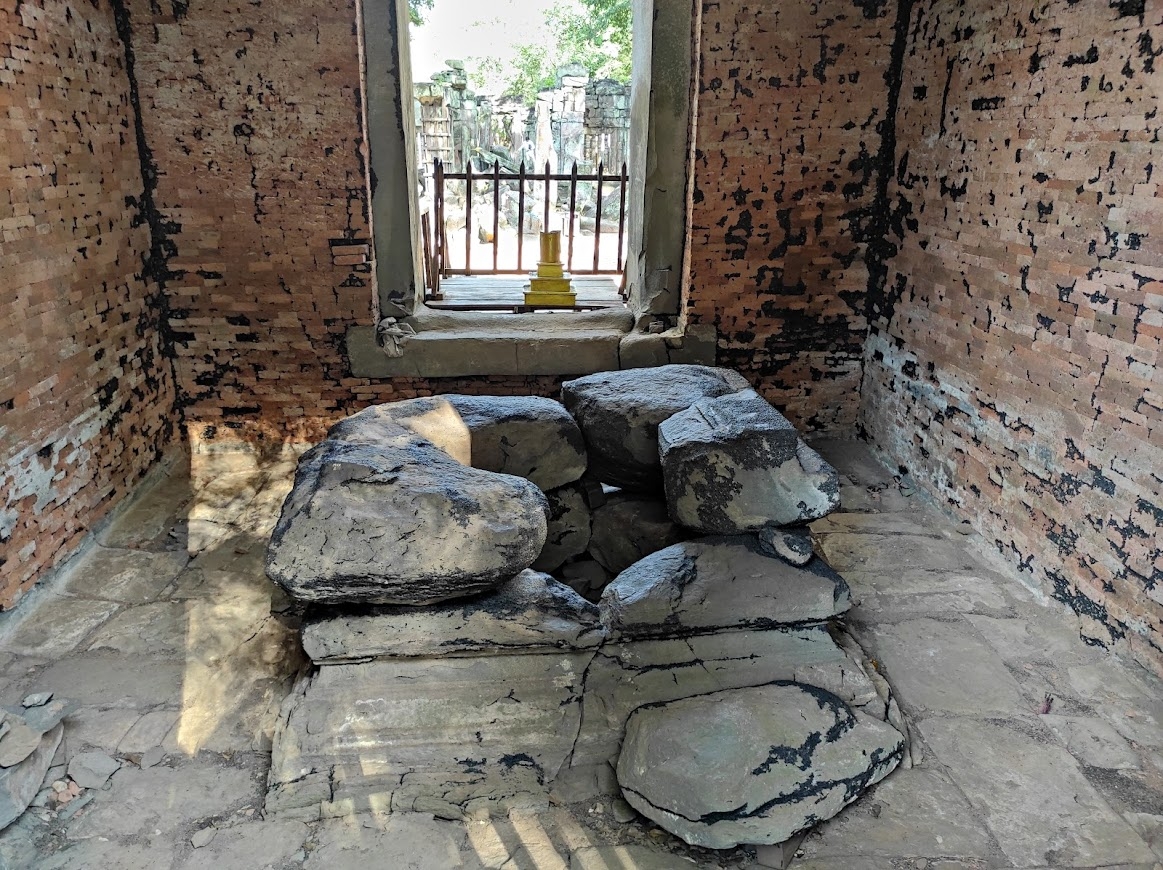
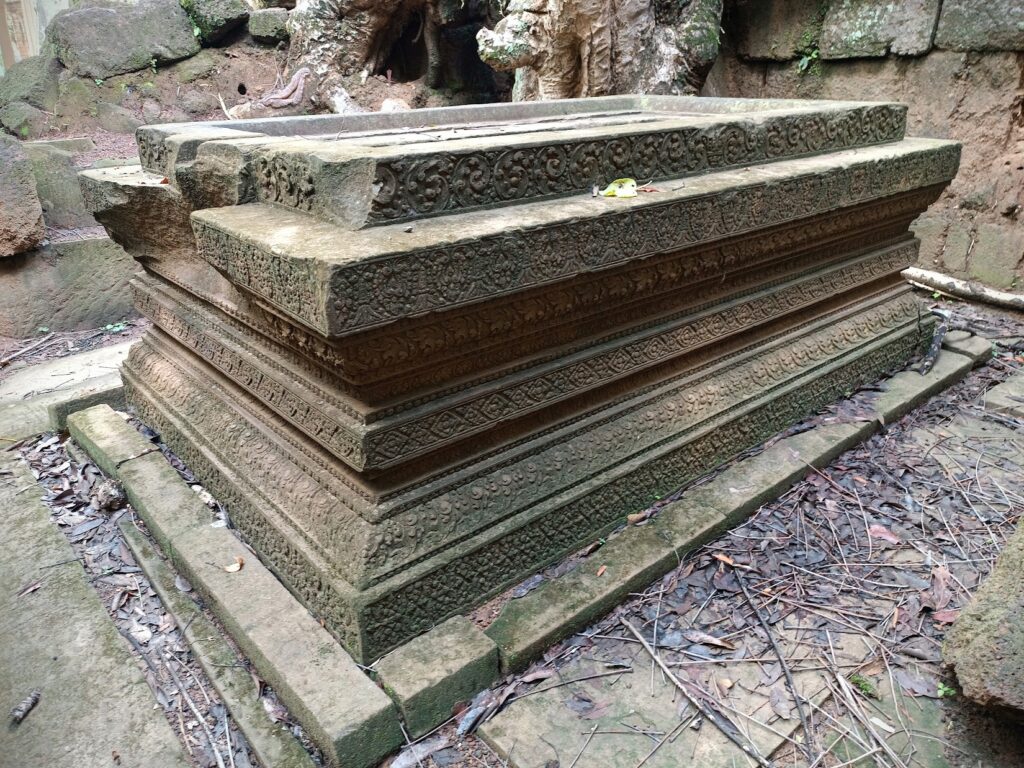
After the Red Temple, a moat is crossed by a causeway that is flanked with naga railings and peristyle galleries before passing another grand entrance gopura into the main enclosure. This entrance, or Gopura II, once housed eight statues that together formed a scene of the judgment of the dead according to research by the EFEO/Bourdonneau/APSARA. It also carries several inscriptions on its walls. This almost immediately connects with Gopura I whose exterior walls are incredibly ornate also featuring bas-reliefs of Dvarapala and Devata.

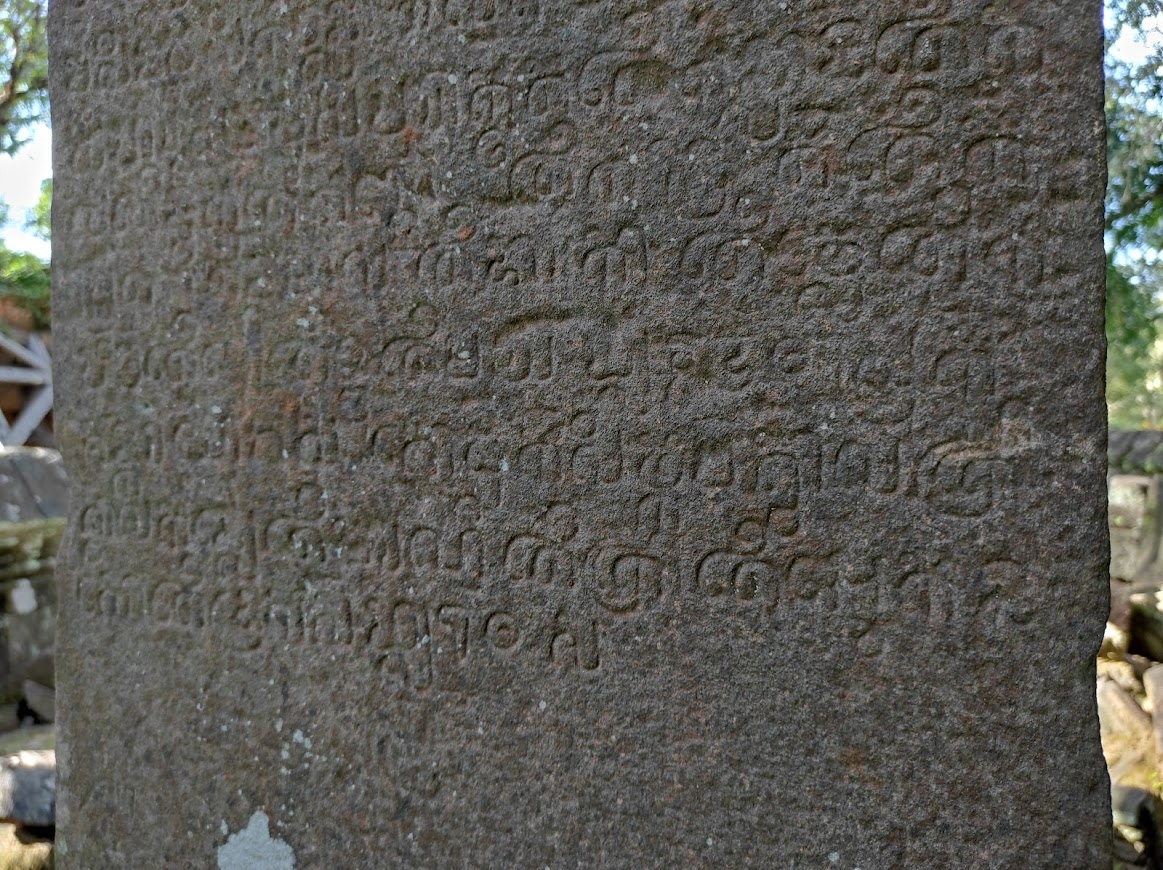

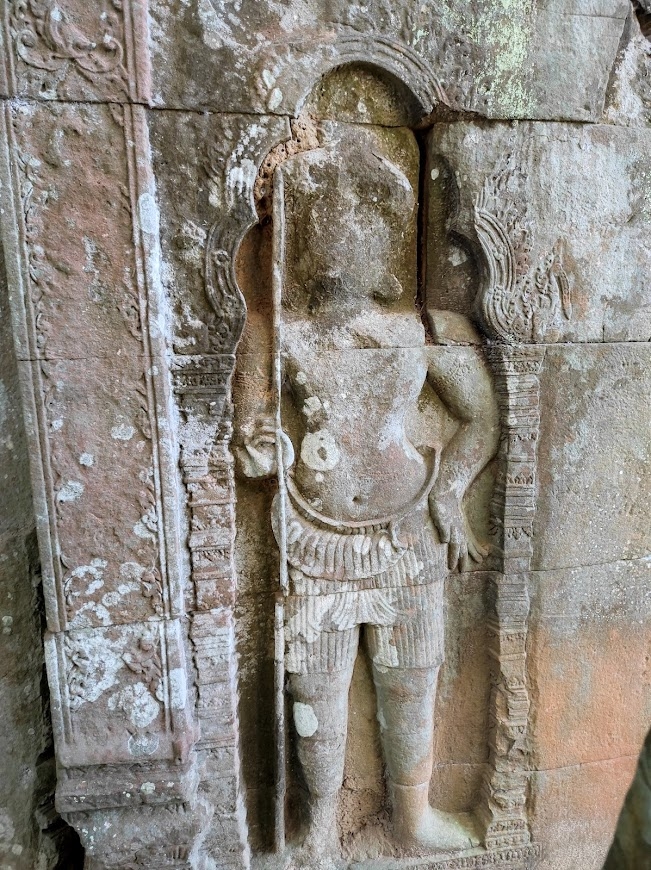
Inside the main enclosure are an arrangement of brick temples with one central brick temple that is preceded and flanked by two “library” buildings, flanking the central temple on either side are three smaller shrines, after which are a row of 5 then a row of four more shrines followed by groups of three temples on either side. The central shrine appears to feature a pattern on its wall, perhaps once painted or the remnant outline of stucco decorating, I do not know. The surrounding shrines, some standing, some in ruin, some featuring decorated lintels, and quite amazingly, some still retaining fragments of their original outer stucco rendering. Around the perimeter are the remains of long laterite buildings.



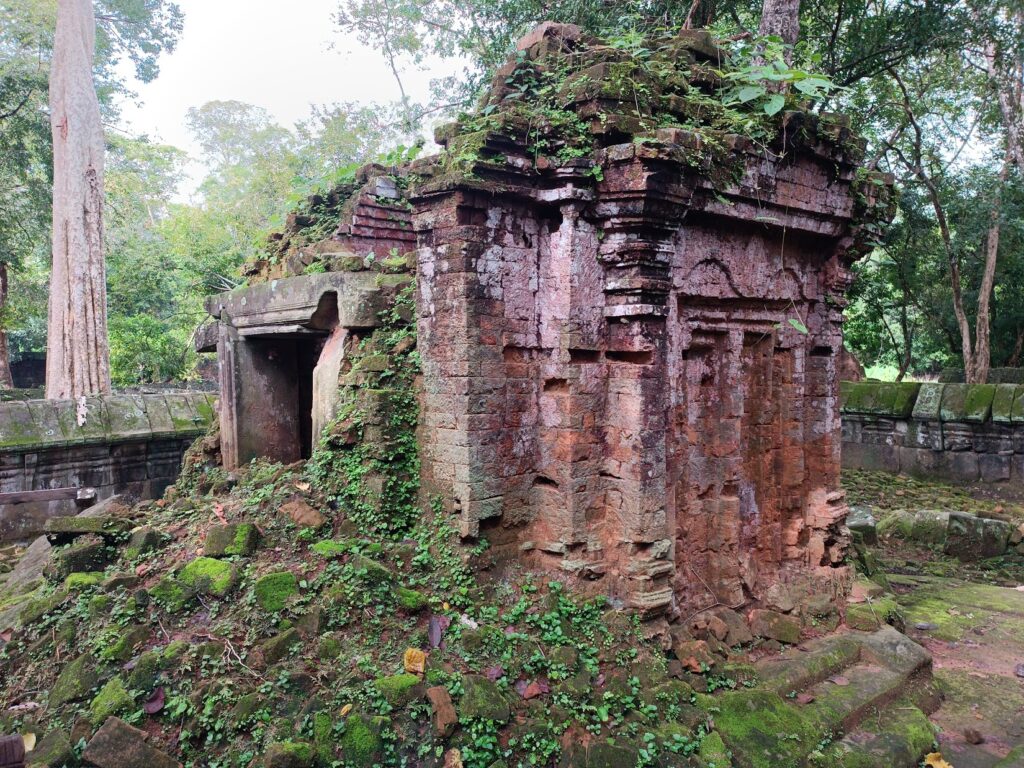
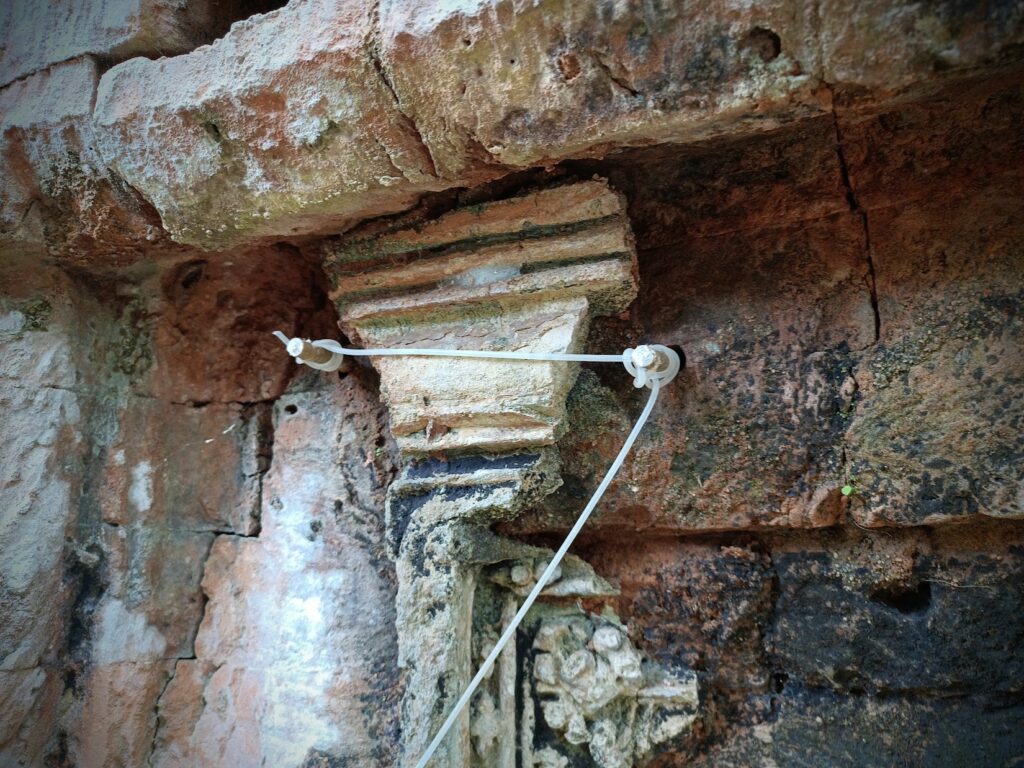
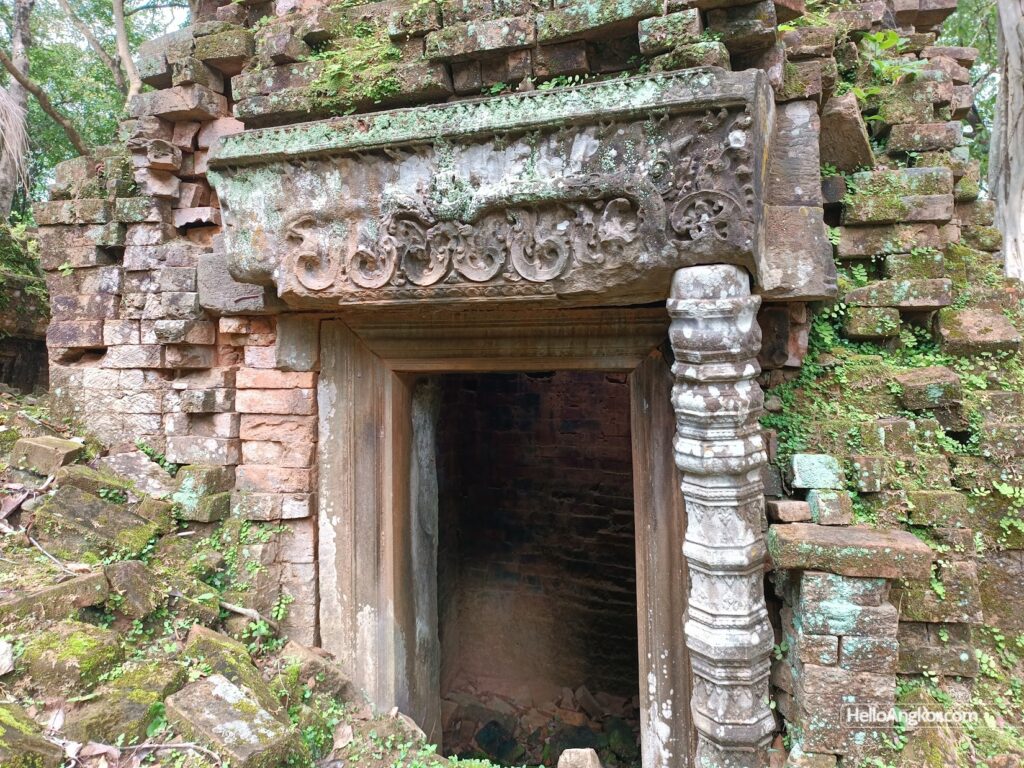
The western side features another gopura, another causeway crossing the moat leading to the entrance gopura to Prasat Prang, the iconic pyramid.
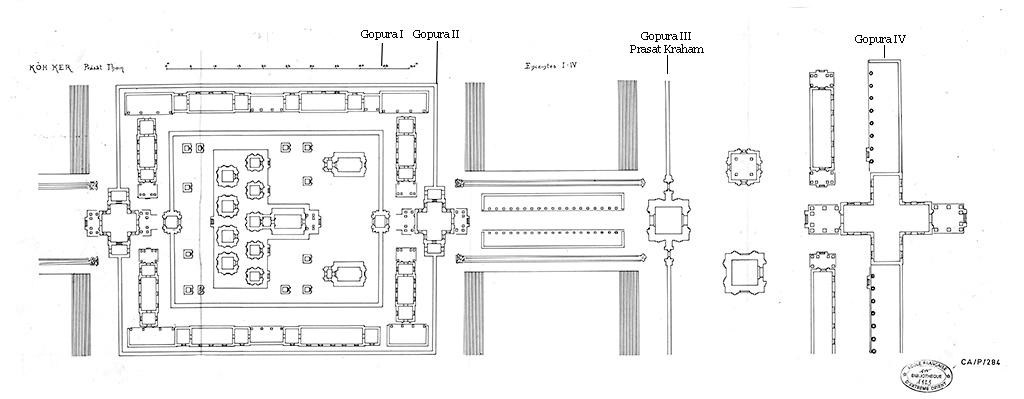
Statuary of Prasat Thom
Within Prasat Thom were perhaps some of the most grand statuary to be found in the ancient world, see the historical images further below. Much of it was removed by the French in the 1900s for preservation, other pieces fell victim to looting and illicit trade. Fortunately, through the hard work of authorities, a lot have been returned to Cambodia and several pieces are now held at the Phnom Penh National Museum.
A statue of a dancing female divinity and a seated male divinity, that some propose to represent King Jayavarman IV, are held in the Guimet Museum in France.
As noted earlier, the 5m tall, 7-tonne statue of dancing Shiva has been undergoing an incredible restoration effort that is in its fourth year I believe. There is a 3D model of its restitution available online here.
In situ, you can see fragments of statuary at gopura II, namely the remnants of Nandin (the sacred bull) and its pedestal that once carried Shiva and Uma (Umamahesvara). Nearby the fragment of a statue of a Shiva Trimurti. (ref: Bourdonneau Éric. Nouvelles recherches sur Koh Ker (Chok Gargyar). Jayavarman IV et la maîtrise des mondes, 2011)
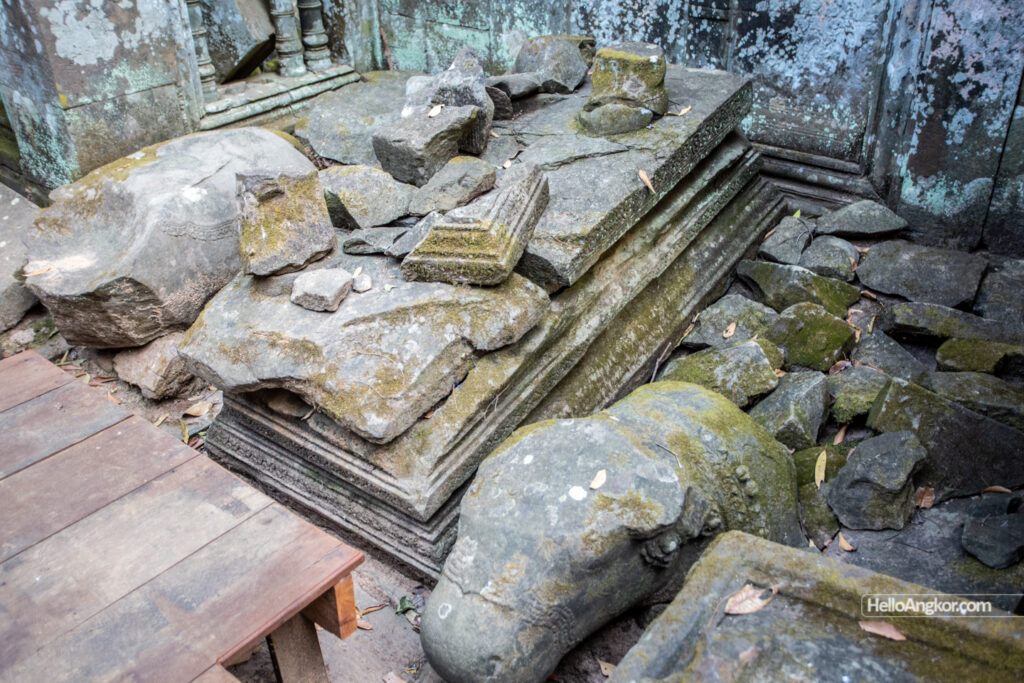

Historical Images
Property of EFEO and more can be seen at Fonds Cambodge. The images are undated although they would seem contemporary to Parmentier’s work published in 1939.
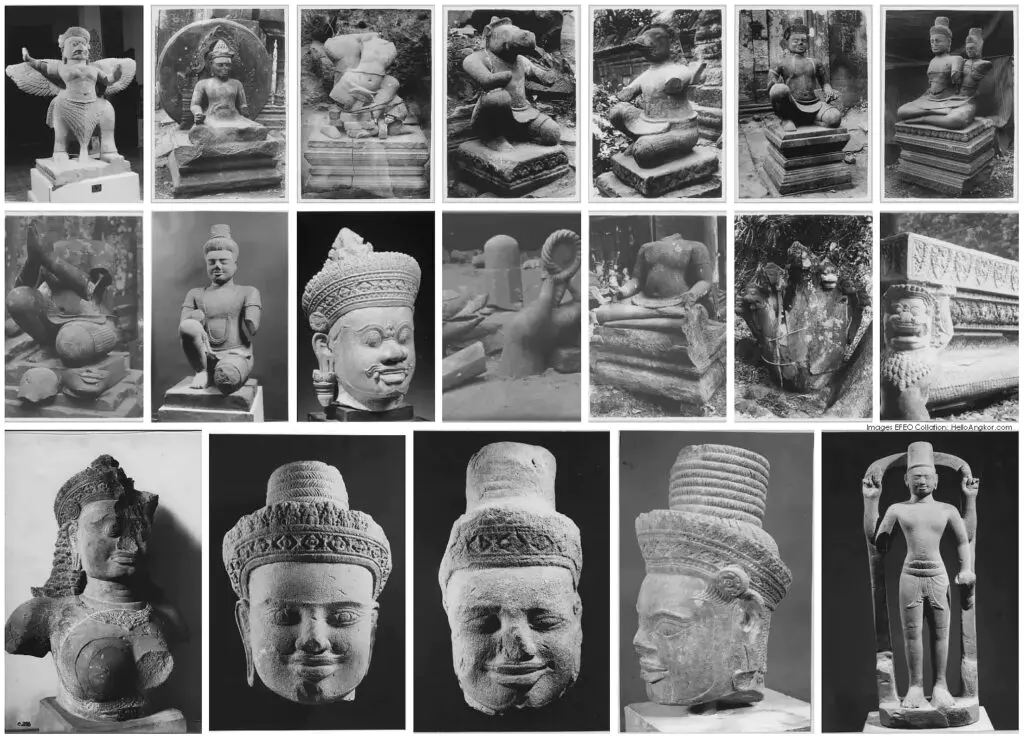
One of the most famed statues is that of Shiva and Uma on Nandin.
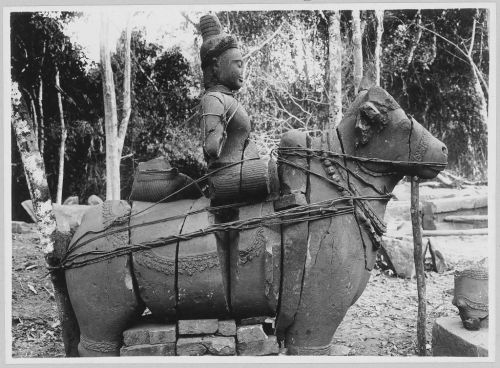

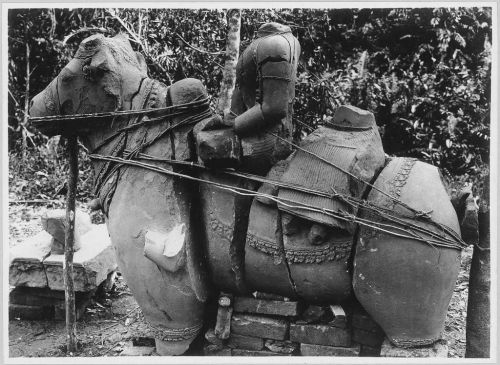
Historical Notes
The earliest notes on the site were by M. Harmand in 1879 followed not long after by Aymonier, Delaporte, and Lajonquiere. Delaporte was famed for his illustrations, and he left a very informative one in his 1880 publication Voyage Au Cambodge
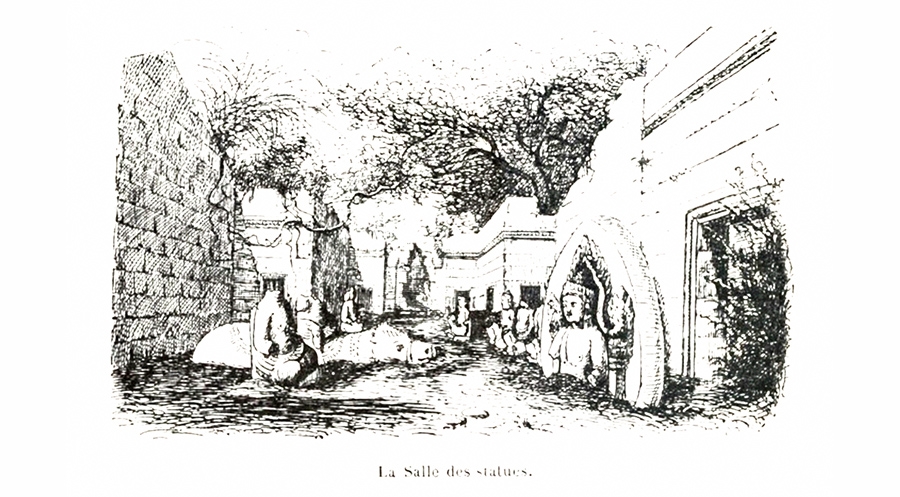
It would be the notes by Henri Parmentier in 1939 that would be the most comprehensive and provide great detail into the state of the site at that time with a 16,000+ word report, photographs, and illustrations, in his publication L’Art khmèr classique, monuments du quadrant Nord-Est.
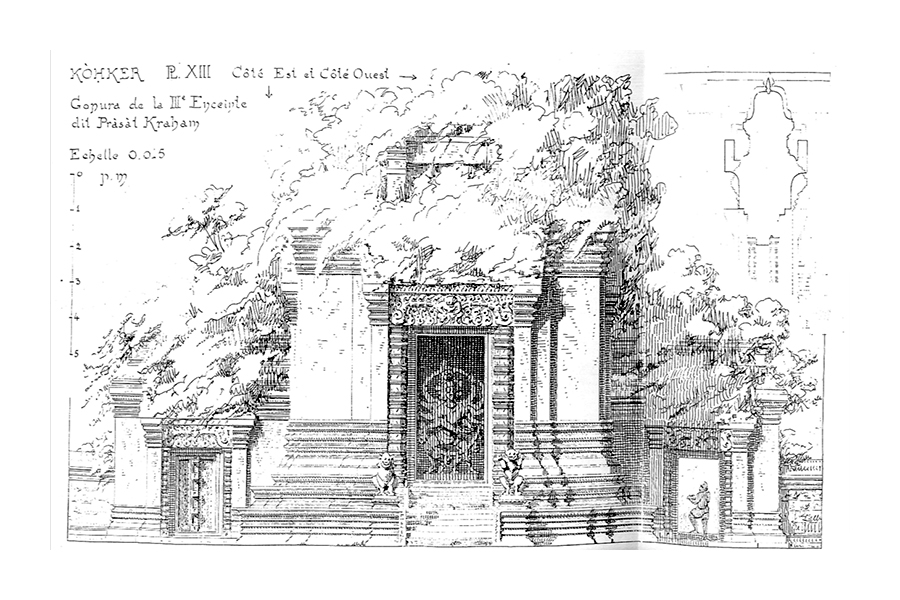
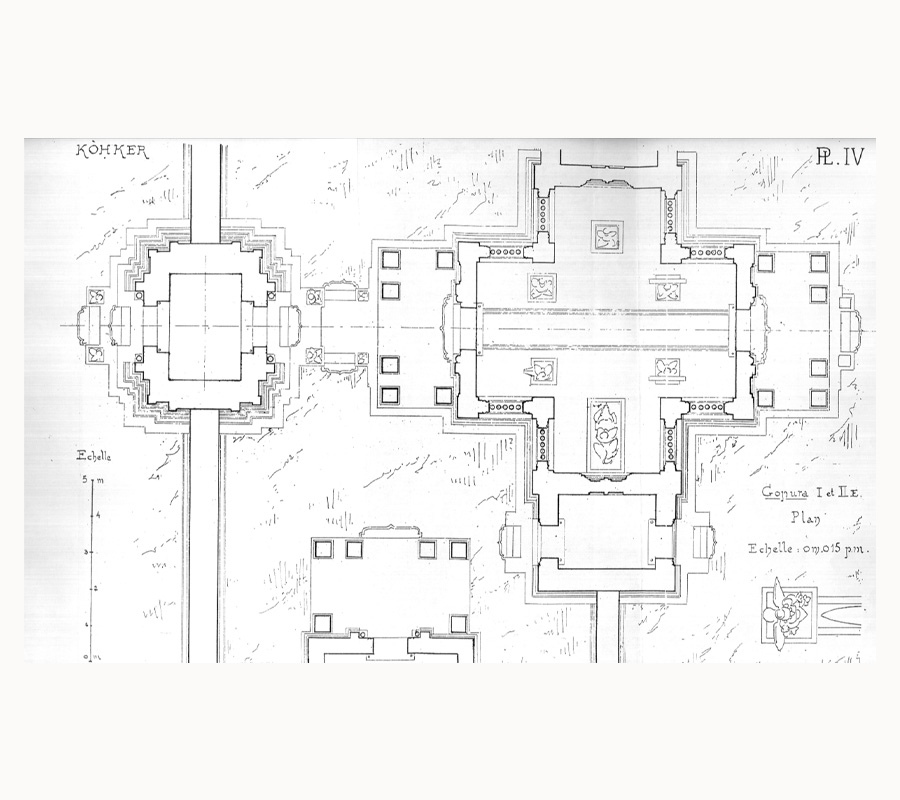
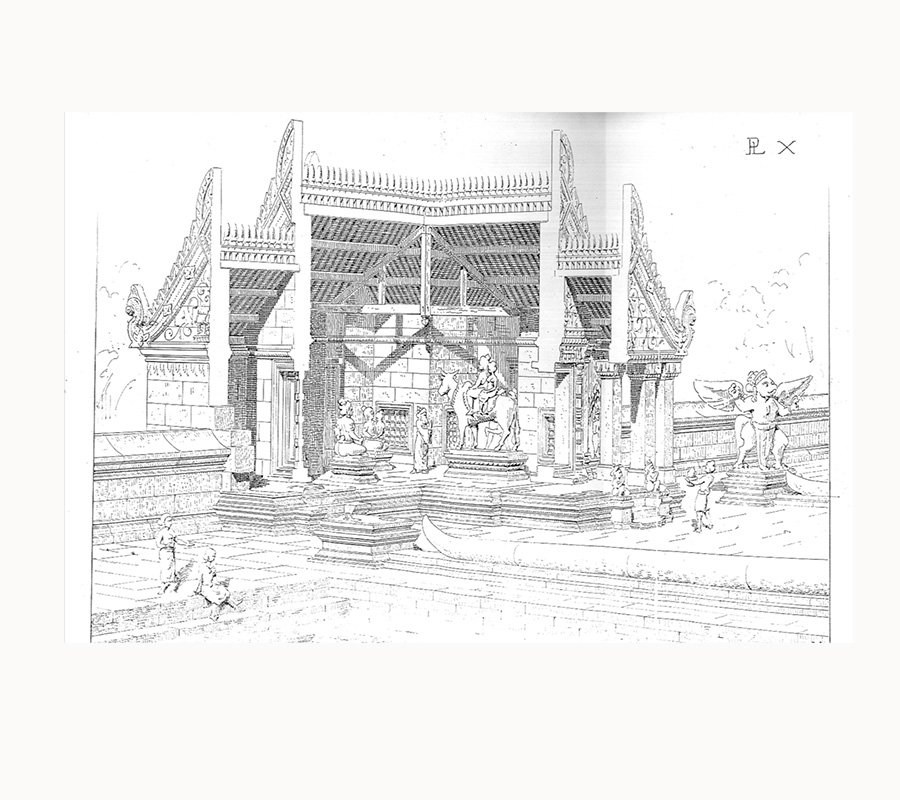
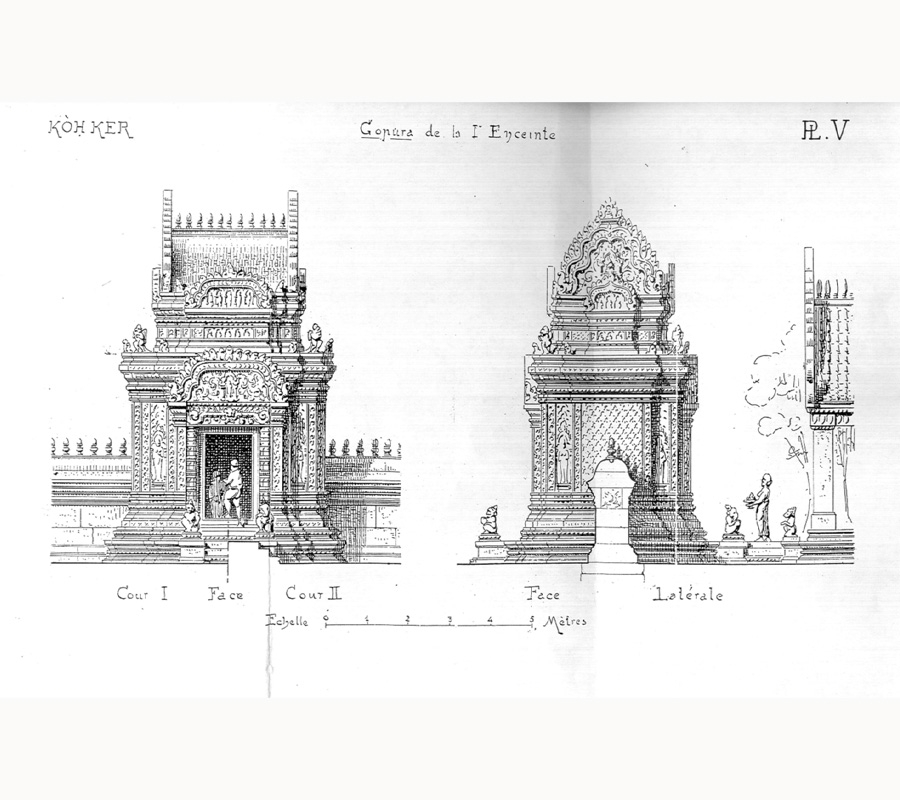
If you are interested in reading the historical notes see our list of online resources here. Of course, several other reports would follow, and deeper archeological research including that by Glaize, Marchal, Boisselier, and important insights into inscriptions by Chhom and in recent times by Jacques revealing much about the era of Jayavarman IV.
Inscriptions
Via CIK (Corpus of Khmer Inscriptions)
- K. 184 – ISCC, n° LXIV, p. 555 ; Coedes 1931, p. 13 ; Jacques 2014, p. 85, 90
- K. 185 – Chhom 2011, p. 230-238 ; Jacques 2014, p. 92
- K. 186 – Chhom 2011, p. 257-258 ; Jacques 2014, p. 95, 96
- K. 187 – IC I, p. 49 ; Jacques 2014, p. 100, 101
- K. 188 – NIC II-III, p. 94 ; Jacques 2014, p. 107
- K. 189 – IC I, p. 50 ; Chhom 2011, p. 259-263 ; Coedes 1931, p. 15 ; Jacques 2014, p. 110
- K. 682 – Coedes 1931, p. 15 ; IC I, p. 50 ; Jacques 2014, p. 114
- K. 770 – IC I, p. 51 ; Jacques 2014, p. 122
- K. 824 – Jacques 2014, p. 130
Map
Site Info
- Site Name: Thom (Pr.) Khmer Name: បា្រសាទធំ
- Reference ID: HA11559 | Posted: January 18, 2021 | Last Update: April 21st, 2022
- Tags/Group: Koh Ker, pr, ra, Temples
- Location: Preah Vihear Province > Kuleaen District > Srayang Commune > Koh Ker Village
- MoCFA ID: 270
- IK Number: 282
- Inscription Number/s: K. 184, 185, 186, 187, 188, 189, 682, 770, 824

